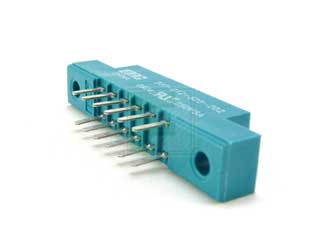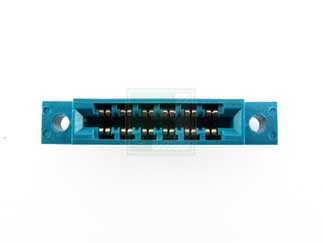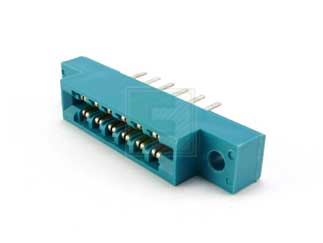






Manufacturer Part #
307-012-520-202
307 Series 12 Position 2 Row 0.156 in Pitch Female Dual Edge Card Edge Connector
Product Specification Section
EDAC 307-012-520-202 - Product Specification
Shipping Information:
Item cannot ship to certain countries. See List
Item cannot ship to following countries:
ECCN:
EAR99
PCN Information:
N/A
File
Date
Part Status:
Active
Active
EDAC 307-012-520-202 - Technical Attributes
Attributes Table
| Type: | Board to Board (Card Edge) |
| Style/Orientation: | Receptacle |
| No of Positions: | 12 |
| Pitch: | 0.156 in |
| Termination: | Solder Pins/Tails |
| Mounting Method: | Through Hole |
Features & Applications
The 307-012-520-202 is a part of 307 Series 0.156 inch 12 postion Dual row green color Board to Board Receptacle Card Edge Connectors
Features:
- UL recognized
- .156 (3.96) contact spacing x .200 (5.08) row spacing
- Accepts .062 (1.57) nominal thickness P.C. board
- Low profile insulator body, .460 (11.68)
- Contact termination options include :
- P.C. tail, wire hole, wire wrap, 90 degree & extender board bends
- Single or dual row configurations
- Large variety of mounting options
- Pre-assembled card guides available
- Accepts between contact and in-contact polarizing keys
Specifications:
- Insulator Material: thermoplastic polyester, UL 94V-0
- Contact Material: copper, nickel, tin alloy, CA-725
- Contact Plating: gold on the mating area, tin on the contact tails, nickel underplate
- Current Rating: 5 amperes continuous
- Contact Resistance: 10 milliohms maximum
- Dielectric Withstanding Voltage: 1800 V AC rms @ sea level between adjacent contacts
- Insulation Resistance: 5000 megohms minimum
- Operating Temperature: -65 to +105 degrees C
- Insertion Force: 16 oz (4.45 N)
- Withdrawal Force: 1 oz (0.28 N)
Applications:
- Industrial
- Data communications
Pricing Section
Global Stock:
0
USA:
0
On Order:
0
Factory Lead Time:
16 Weeks
Quantity
Unit Price
1
$3.74
15
$3.65
40
$3.60
100
$3.56
250+
$3.45
Product Variant Information section
Available Packaging
Package Qty:
25 per Bag
Mounting Method:
Through Hole

